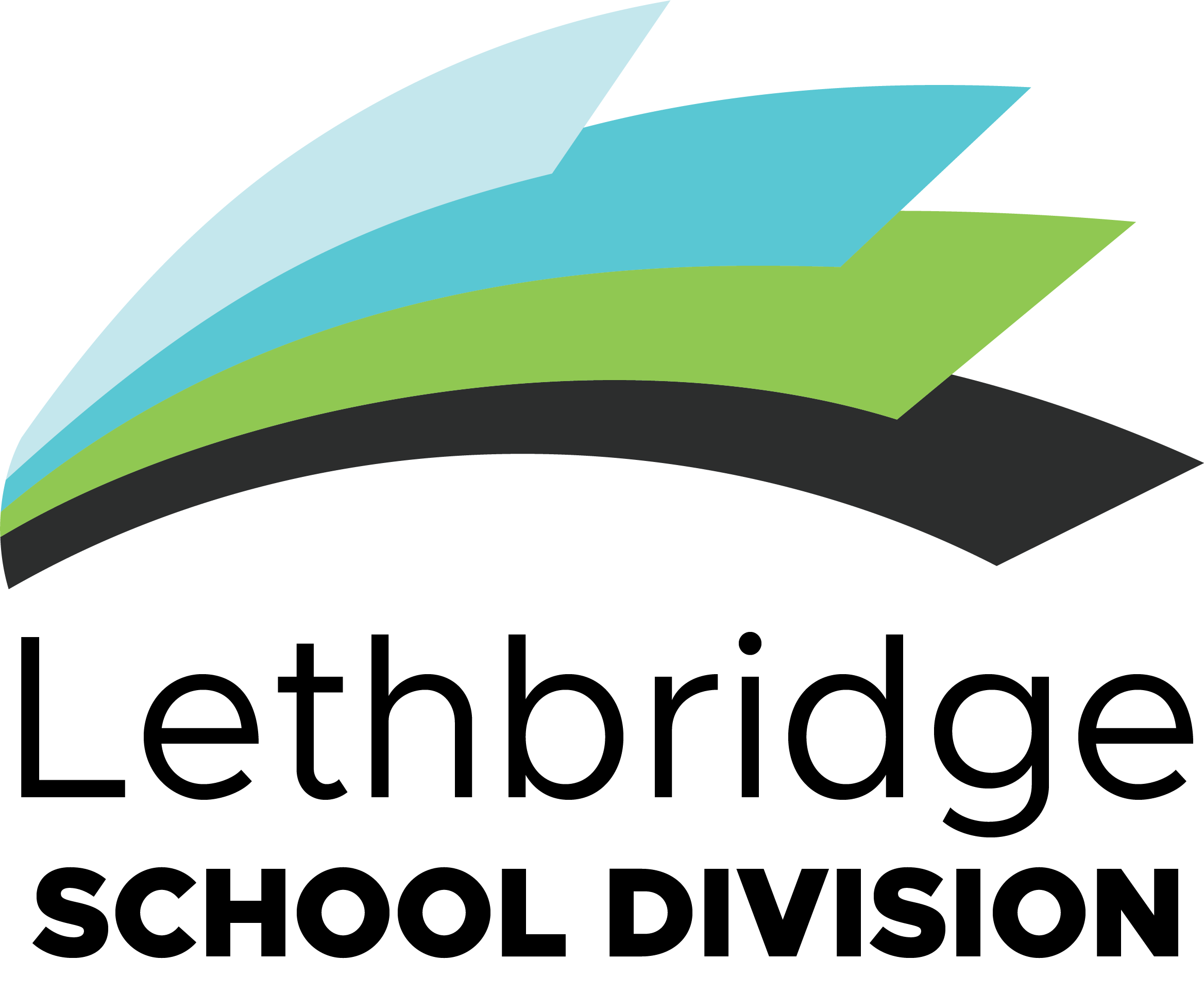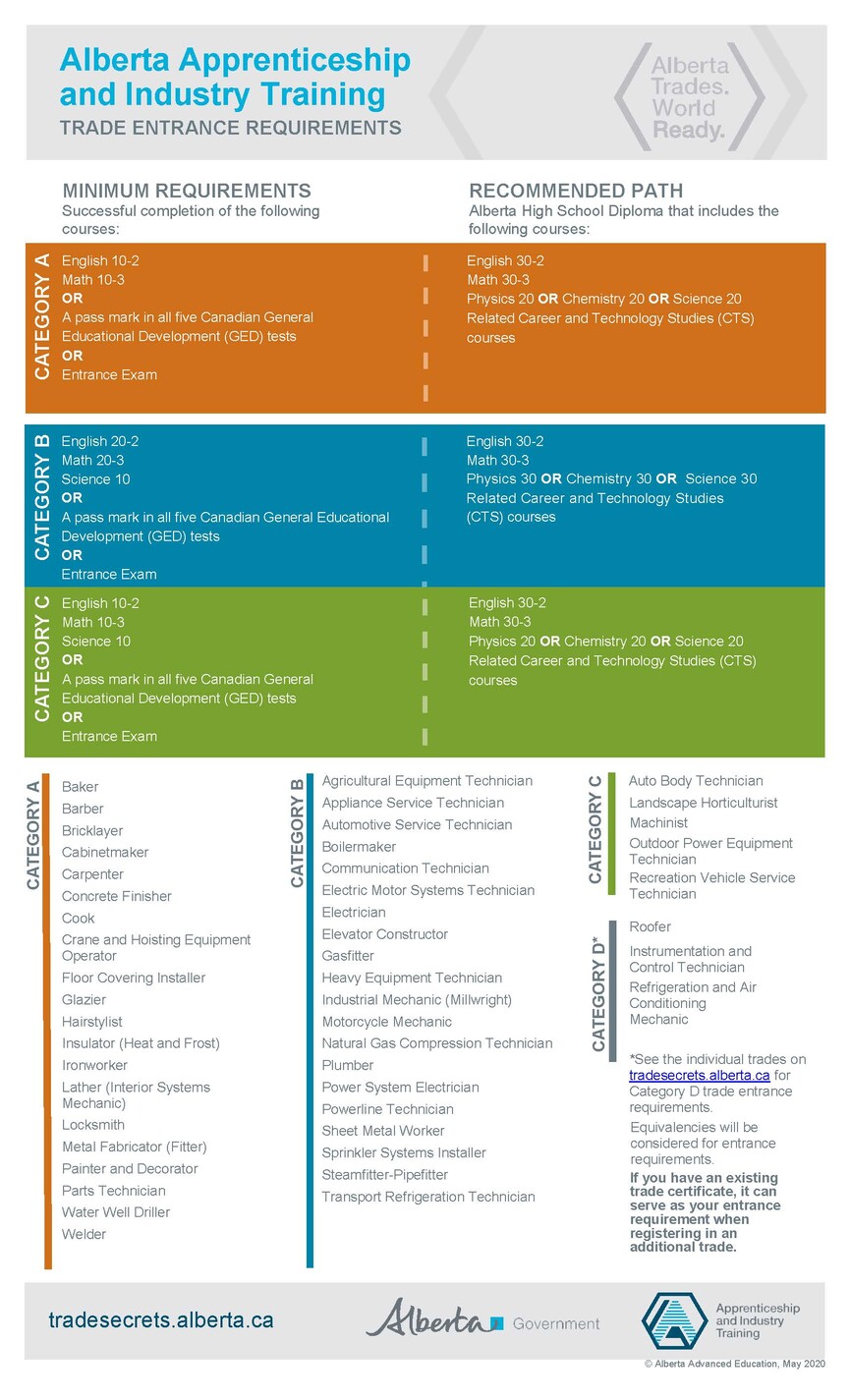College and Careers
Click on the link below to access the Lethbridge School Division Career Services page:
Immanuel Christian Secondary School
Mr.Andrew Krul: andrew.krul@lethsd.ab.ca or (403) 894 0375
- Lethbridge School Division Off-Campus Co-Ordinator
- RAP (Registered Apprenticeship Program)
Miss Taunie Magnuson: taunie.magnuson@lethsd.ab.ca
- Work Experience 15/25/35
- Green Certificate
Miss Magnuson will be at ICSS each Tuesday from 8:45 AM - 3:30 PM
You can drop off completed contracts and pay stubs in the drop box attached to her office door
Mr. Darin Gibson: darin.gibson@lethsd.ab.ca or (403) 315-9022
- RAP (Registered Apprenticeship Program)
Mr. Gibson will be at Immanuel Christian Secondary School each Tuesday from 8:45 AM - 10:45 AM
Sara Roncin: sara.roncin@lethsd.ab.ca or (403) 635-1854
- Post-Secondary Guidance
- Scholarships
- Workforce / Job Application & Resume Support
Sara will be at Immanuel Christian Secondary School each Friday from 8:00 AM - 12:00 PM
Work Experience 15/25/35
WHY?
- Earn up to 15 credits towards your high school diploma
- Include your work experience on your resume
- Use your work experience mark for Alexander Rutherford Scholarship to boost your average for your Grade 10 and Grade 11 marks and as a fifth entrance course for many university and college programs (check with your teacher counselor for specifics). For example, to apply for the Registered Nursing program, you need English 30-1, Chem. 30, Bio. 30, Math 30-2 and a fifth course. That can be the very good mark you can earn through work experience and it counts just as much as your core courses.
- Graduate with more than 100 credits to give yourself a buffer.
- Use work experience to find out if your potential career is the one you really want to follow. Even if you first go to post-secondary after the work experience, many employers will remember you once you begin looking for full time jobs in your field.
WHERE AND WHEN
- Part time job placements (fast food, restaurants, retail, trades etc!)
- Volunteer (hospitals, care homes, animal shelters, food banks etc.)
- During school hours, after school, weekends, and holidays. You may not earn work experience credit for work between 10 p.m and 7 a.m.
HOW?
- Complete the required HCS 3000, 1 credit course in CALM or see your school's work experience practitioner-see contact information below.
- Return to the practitioner when the course is completed and she will give you an off campus agreement form to fill in. Return this to her when it is filled in. Your hours will count when you return the form either in-person or by email. You need to submit monthly hours in person to the practitioner or email or text a picture of them to her. We encourage the emailing and texting in order to reduce paperwork. She can also provide you a time sheet if you need one.
EVALUATION
- You need to work or volunteer a minimum of 75 hours; this will give you 3 credits. If you work at more than one place we can combine the hours.
- Andrew Krul, the off campus education co-ordinator, will complete an evaluation with your employer. See the practitioner so you can see that important feedback.
The Registered Apprenticeship Program (RAP)
Benefits for Students
- Get a head start on a trade. Most trades are 4 years in length and 1500 hours of work each year. All of the hours the students work in high school go towards that first year and beyond.
- Earn significant high school credits and earn while you learn.
- Build your skill set and your resume. Even if you do not pursue the trade after high school, you developed a skill set of critical thinking, learning to work safely, following multiple instructions, developing a strong work ethic etc. that employers are looking for.
- It's an opportunity to dovetail career paths and education types: for example, become an electrician (college) and an electrical engineer (university). What an excellent way of combining the practical and theoretical ways of learning.
Benefits for employers
Access young, motivated, screened and teachable students for their workforce.
Differences from regular apprentices
- Employers are not required to pay the students the regular 60% wage of journeyman wages that first year apprentices earn.
- RAP students do not need to earn their first year hours in the 18 month span required for other apprentices.
- Screened students for attendance, punctuality, aptitude, work ethic, genuine interest in the trade and motivation-plus other requirements, such as driver’s licence that may be required by employers.
- Worker’s compensation coverage by Alberta Education.
- On-going support and monitoring by the off-campus education coordinator to promote continued success and development of the student in the trade.
General Process
- Students are screened and communication occurs with parents or guardians.
- One or two days of job shadow are arranged. Off campus education will ensure that the student has the required PPE.
- If there is a positive outcome form both the employer and student’s side a more extensive work experience can be arranged to ensure the student has the soft and hard skills required for the position and to assess further interest on the part of the student. During this time the employer is not required to pay the student.
- If there is a good fit, and the schedule can be arranged to ensure there is sufficient time to be productive employment (mornings or afternoons availability etc), the student is signed up as an apprentice. As a RAP student the employer must pay the student minimum wage or higher. In order for RAP to begin HCS 3000 needs to be completed.
High School Credits
- Up to 40 high school credits can be earned. This would be 1,000 hours of work. Students need to work a minimum of 125 hours which would give 5 credits.
- You meed to submit monthly hours in person to the practitioner or email or text a picture of them to her. We encourage the emailing and texting in order to reduce paperwork.
Information Links for students
- Visit www.tradesecrets.alberta.ca for a detailed description of all 50 trades in Alberta
- View business websites to see what the companies do.
Entrance Requirements.
1. You need to be 15 and in Grade 10.
2. The following chart shows the required entrance requirements for each trade. You can be signed up in RAP if you miss a course, but if you pursue the trade after high school and apply for technical training you will need to have the minimum high school requirements or pass the trade entrance exam with a minimum of 70 per cent.


